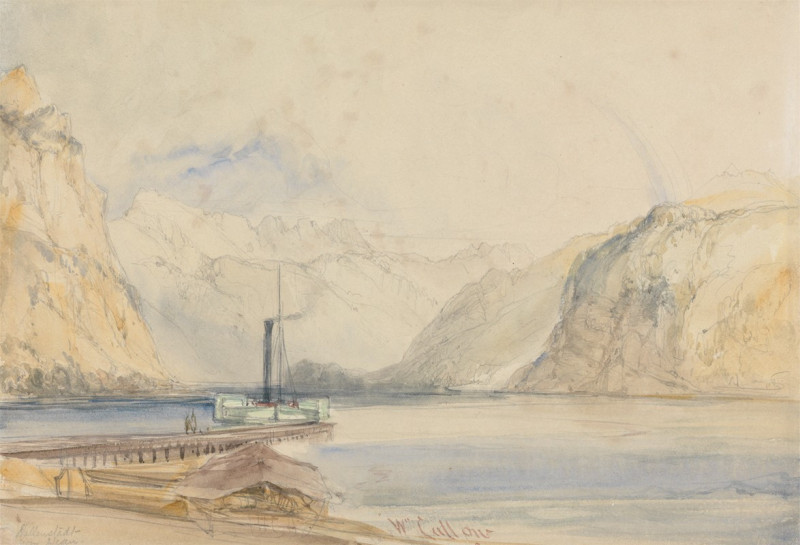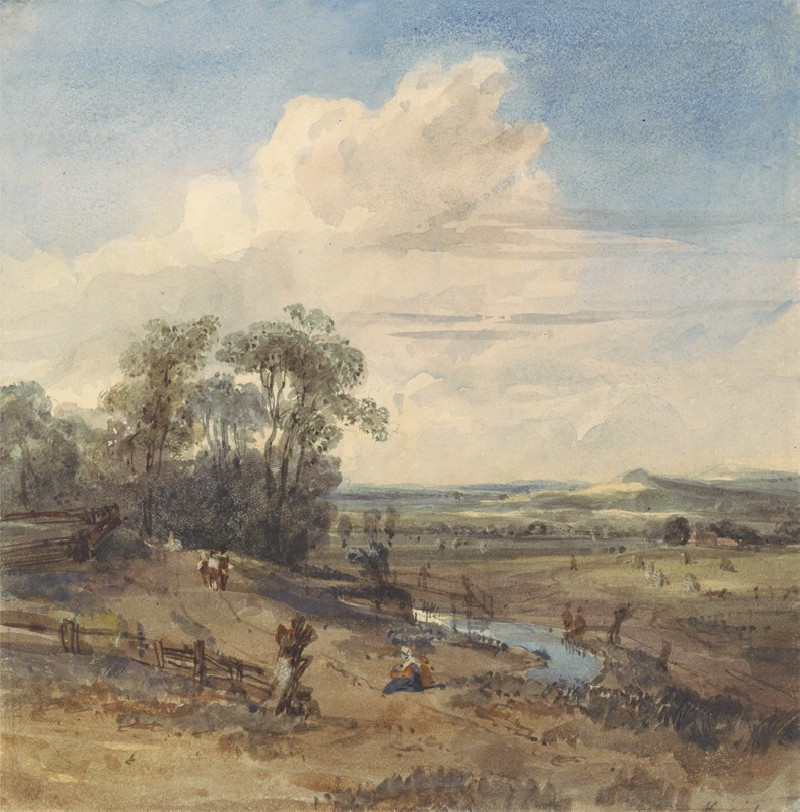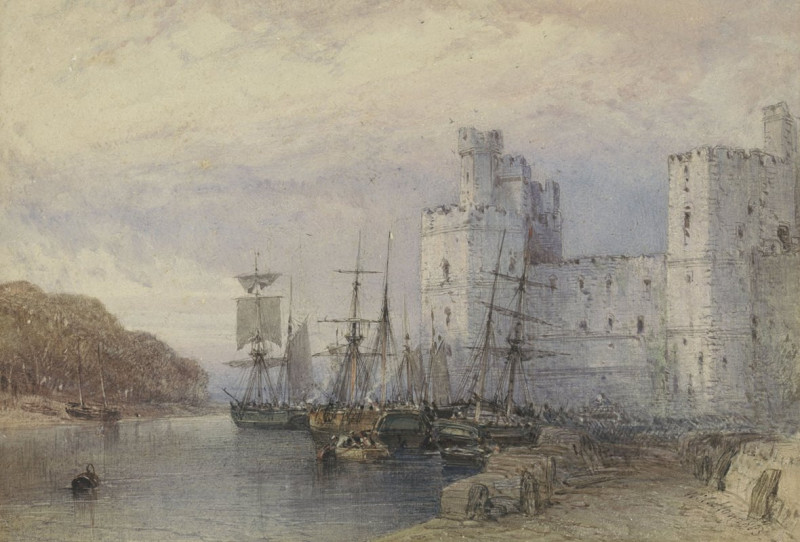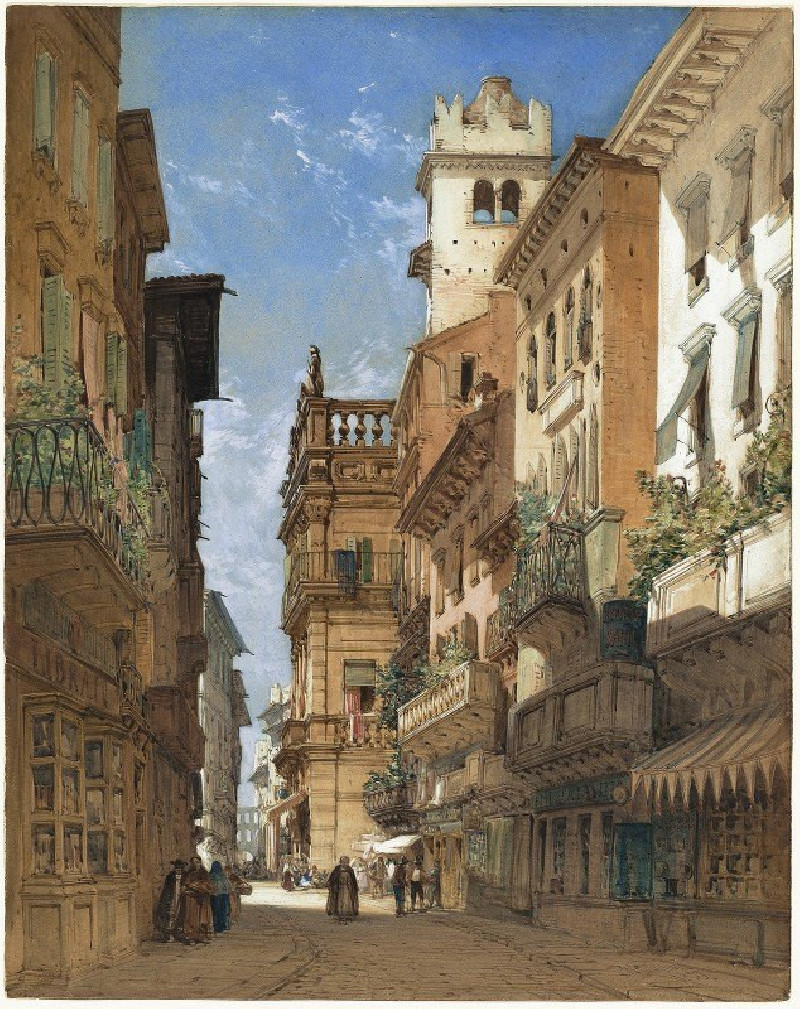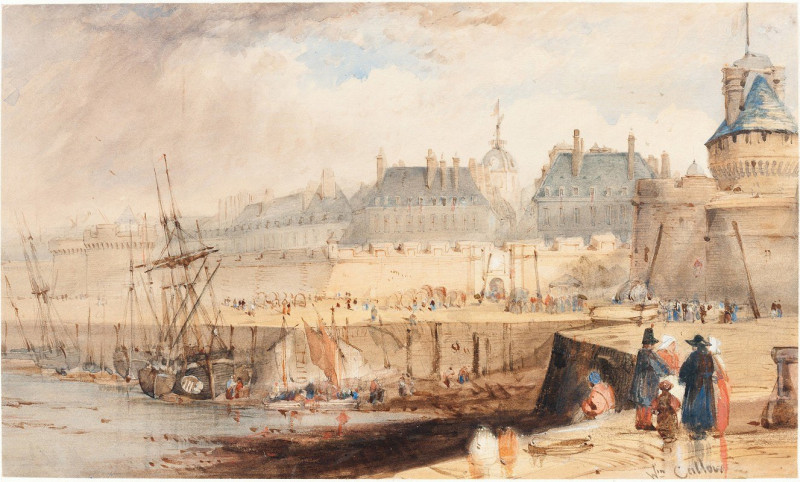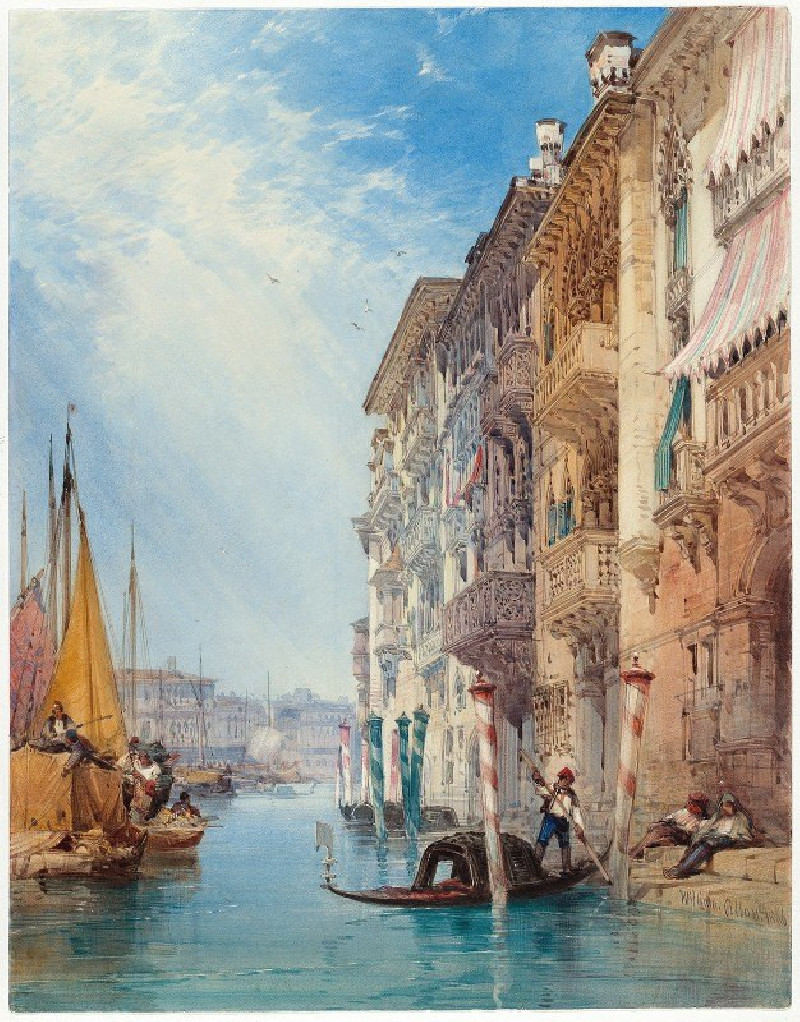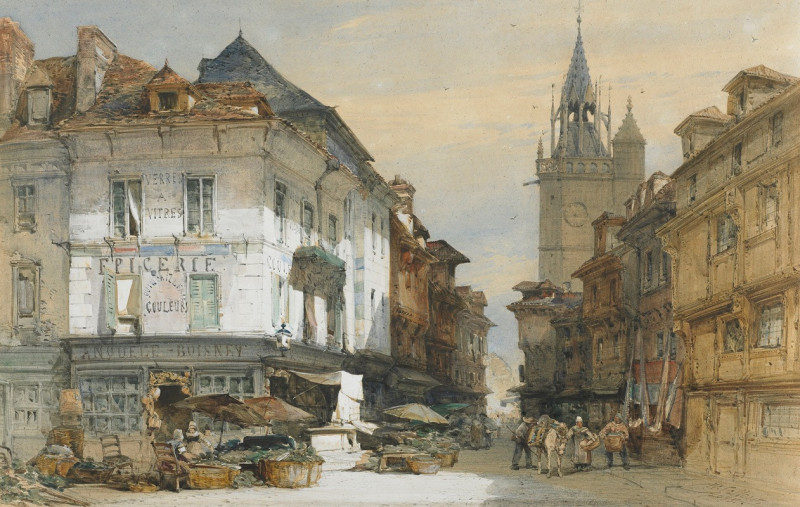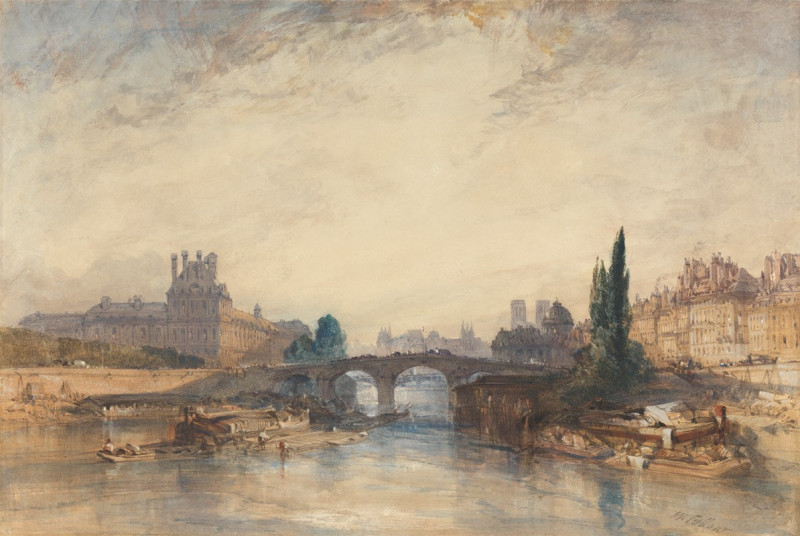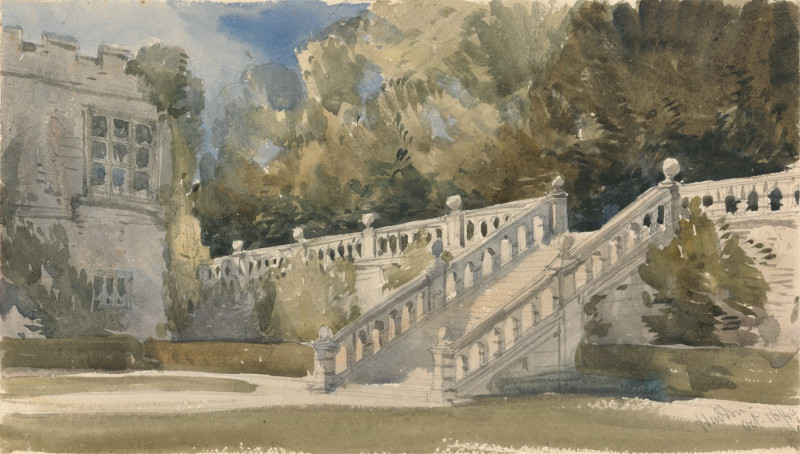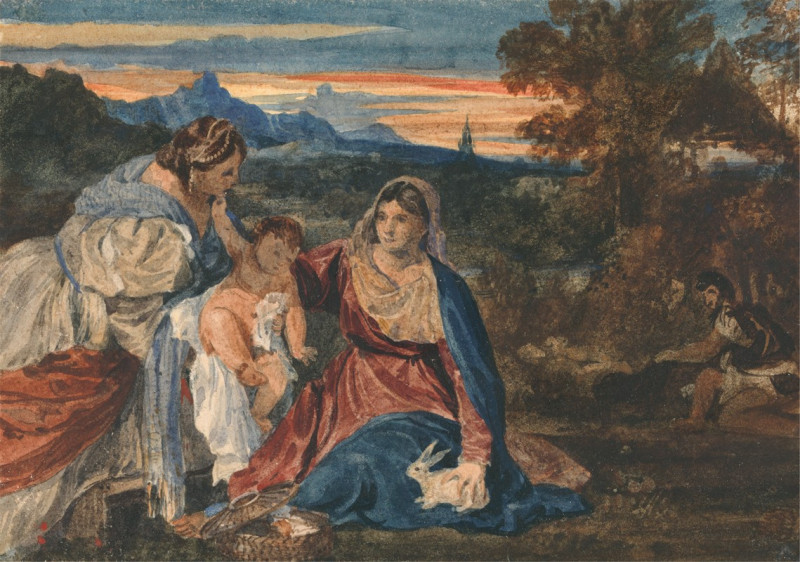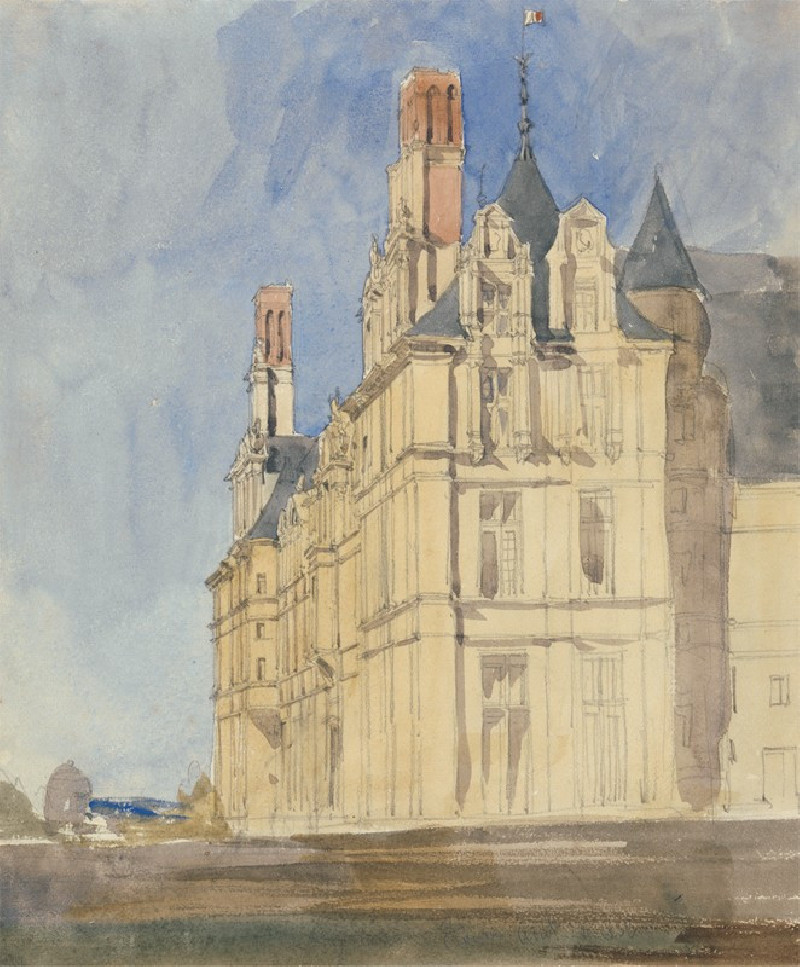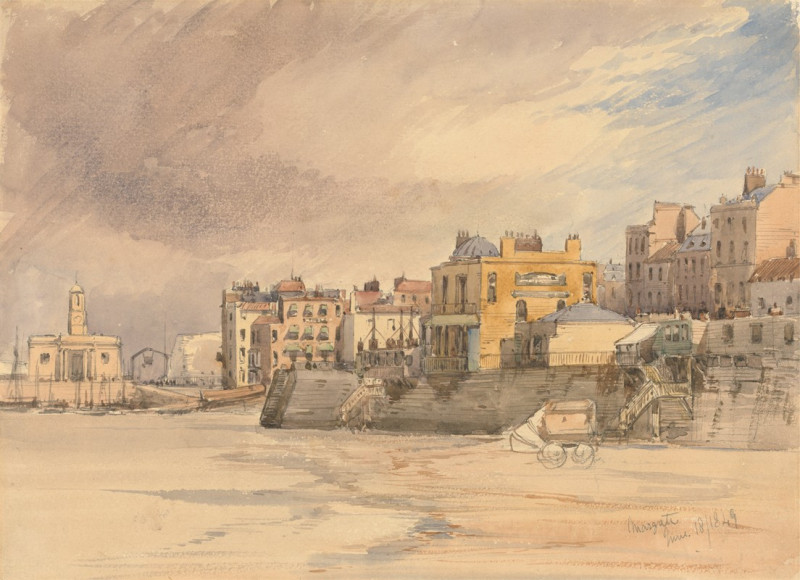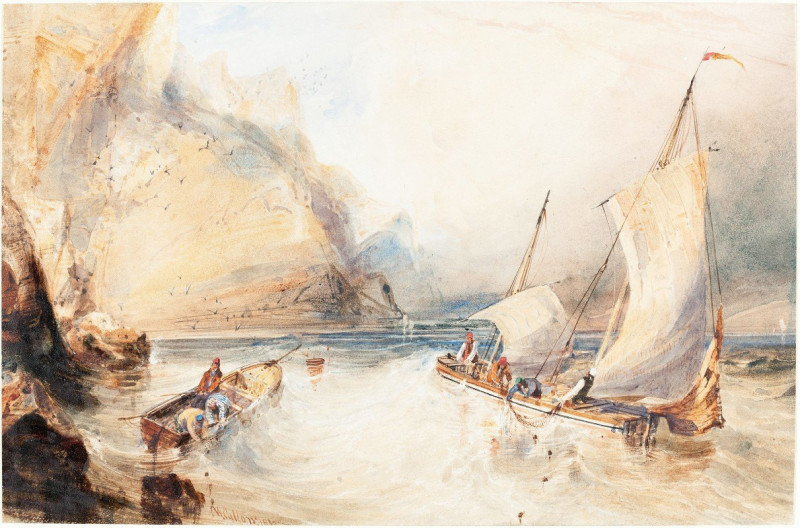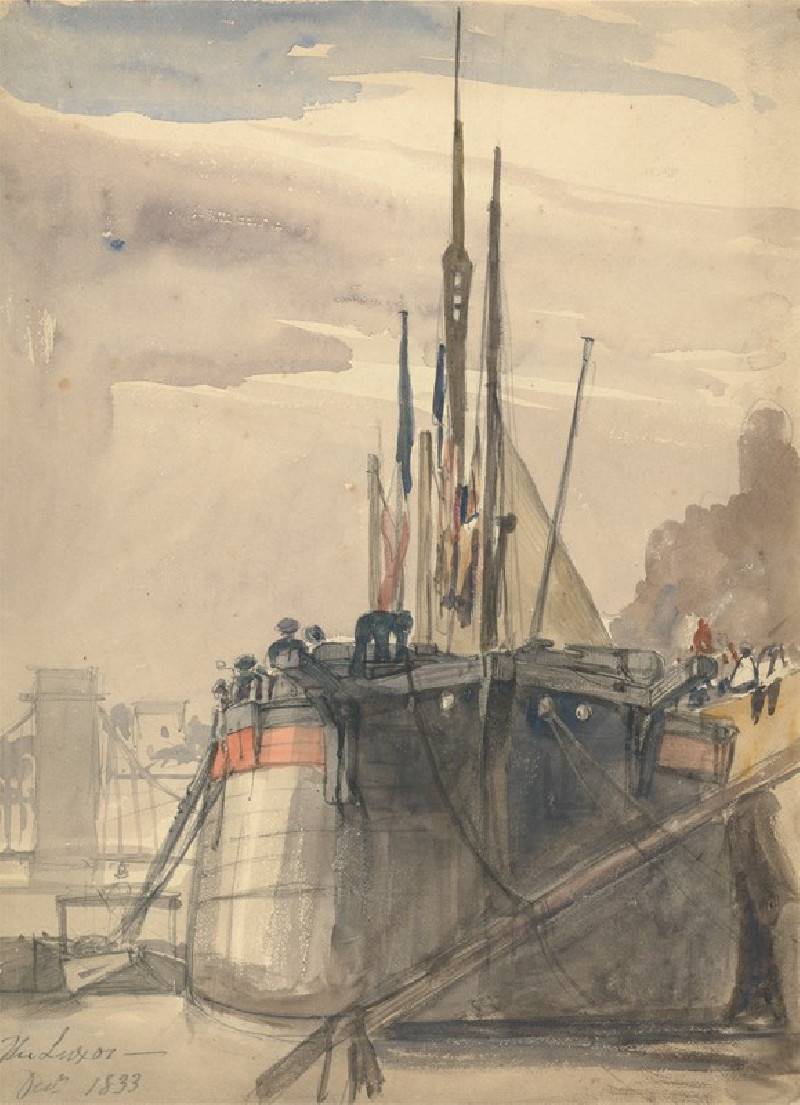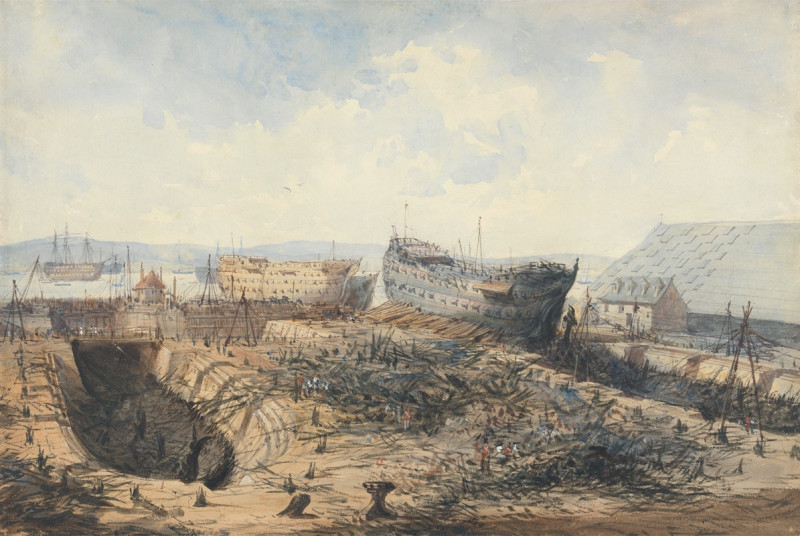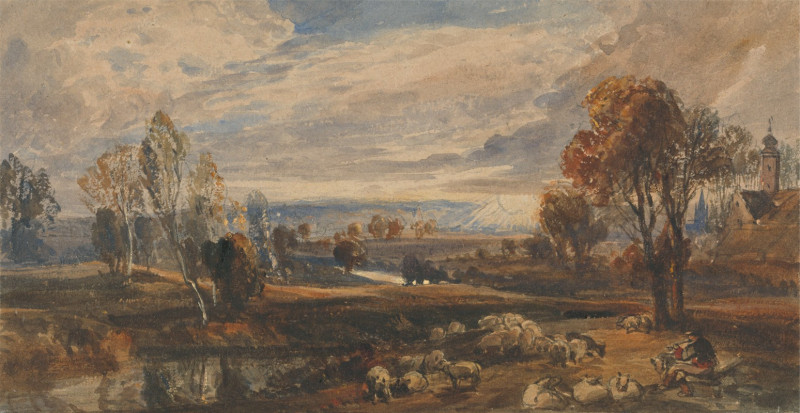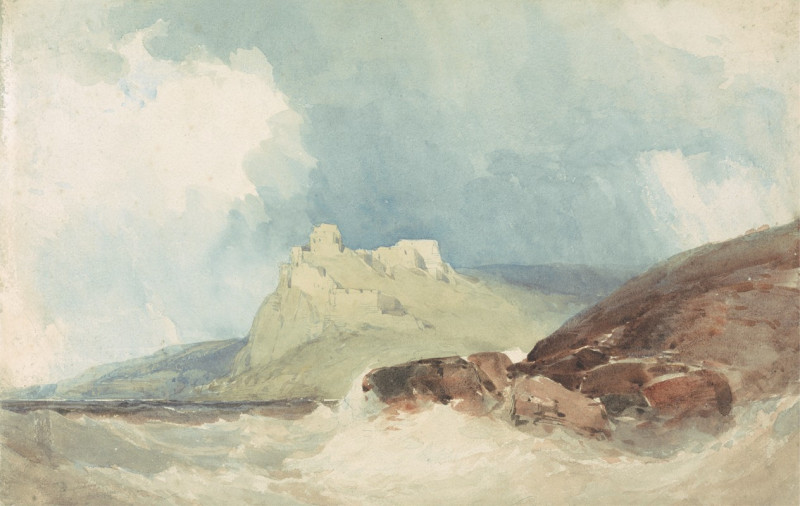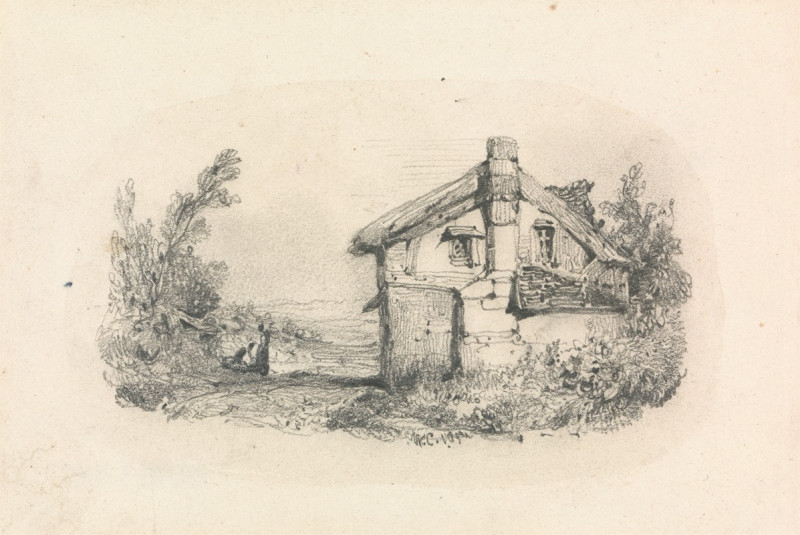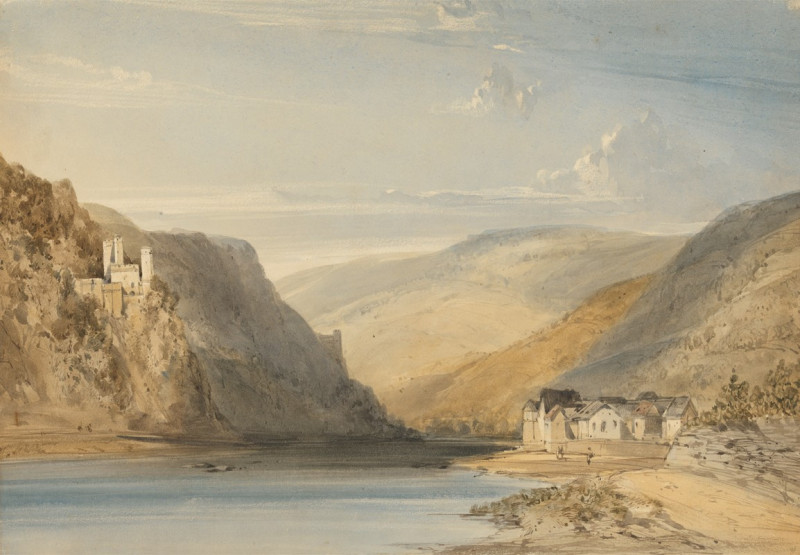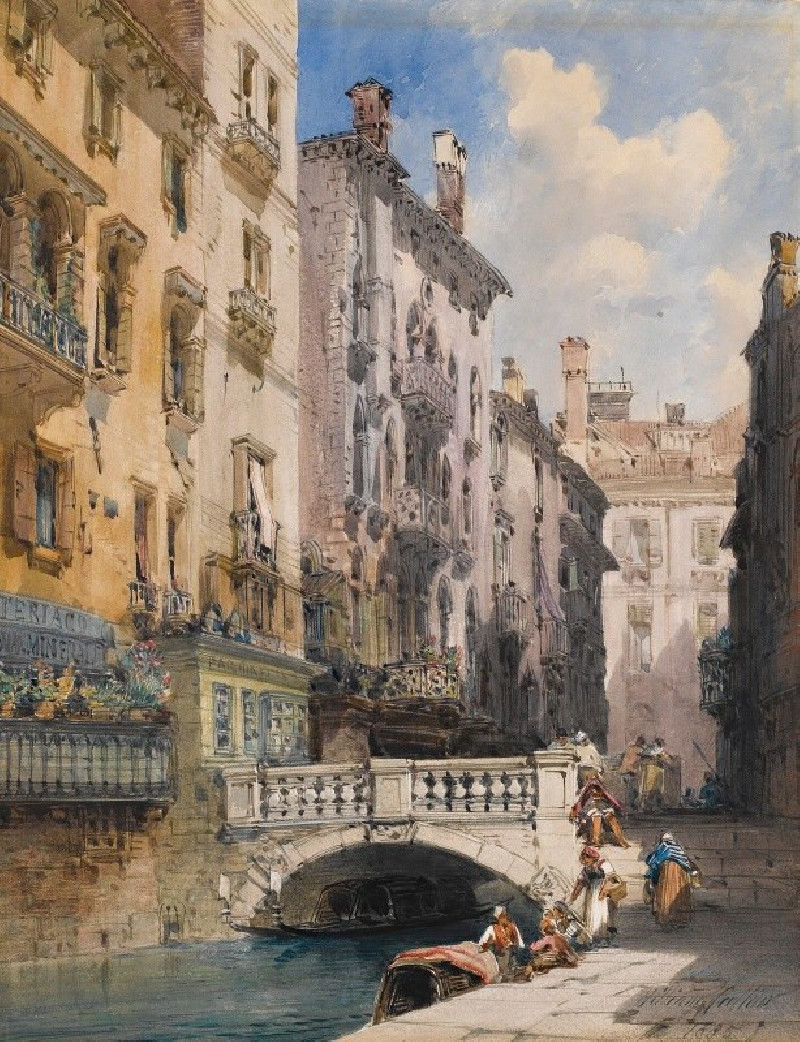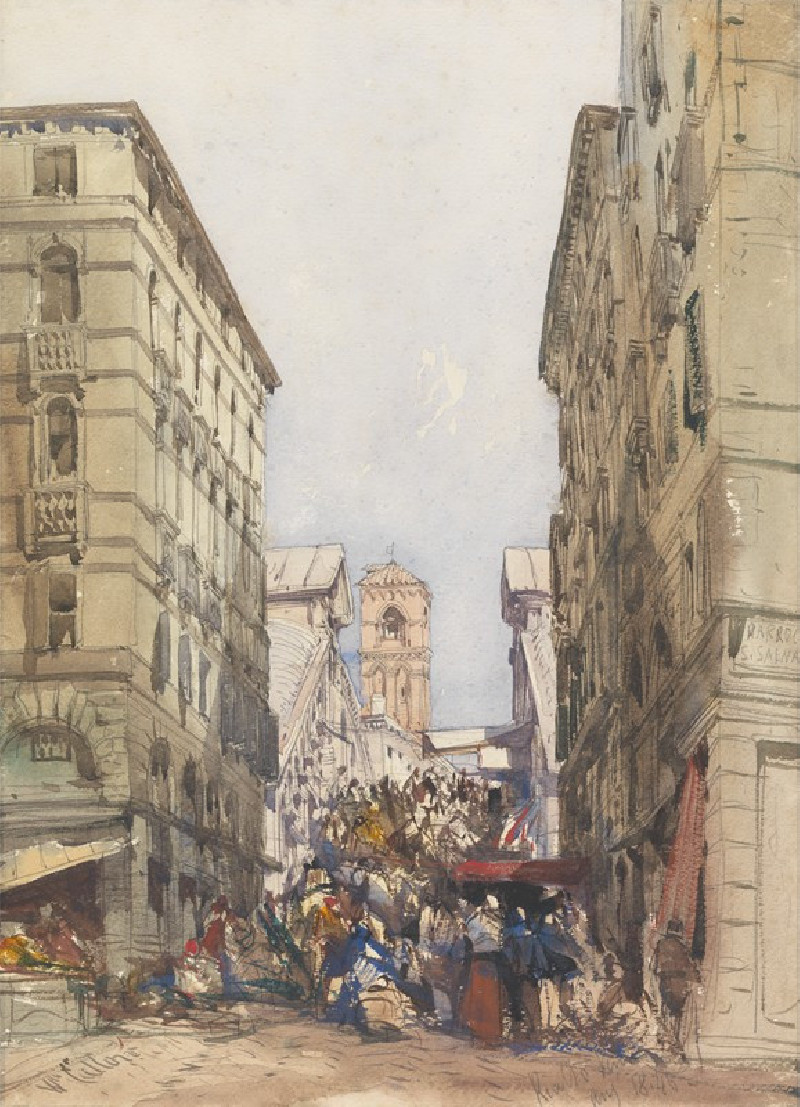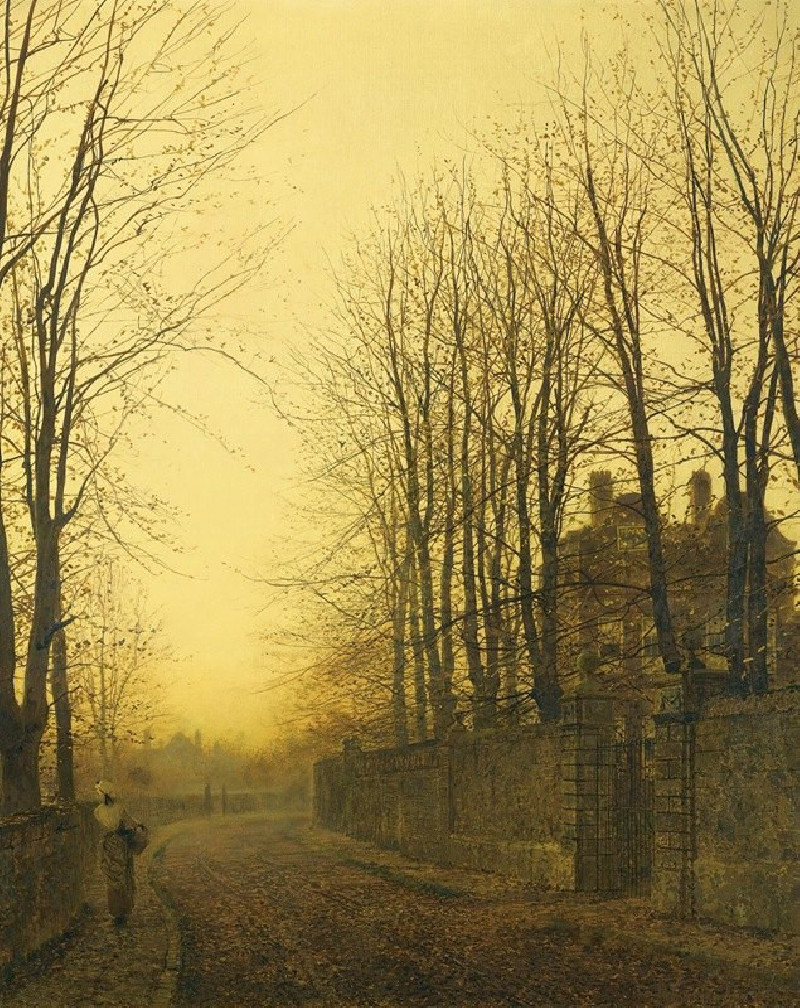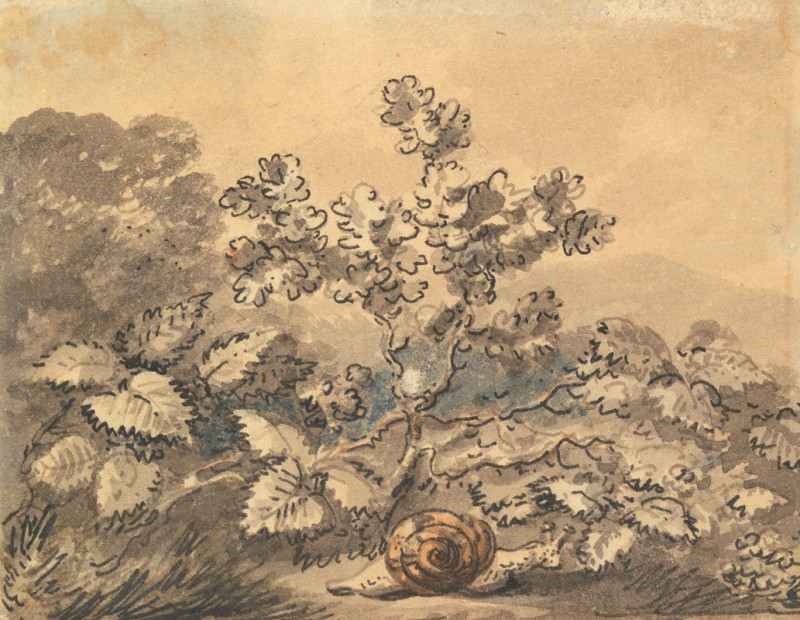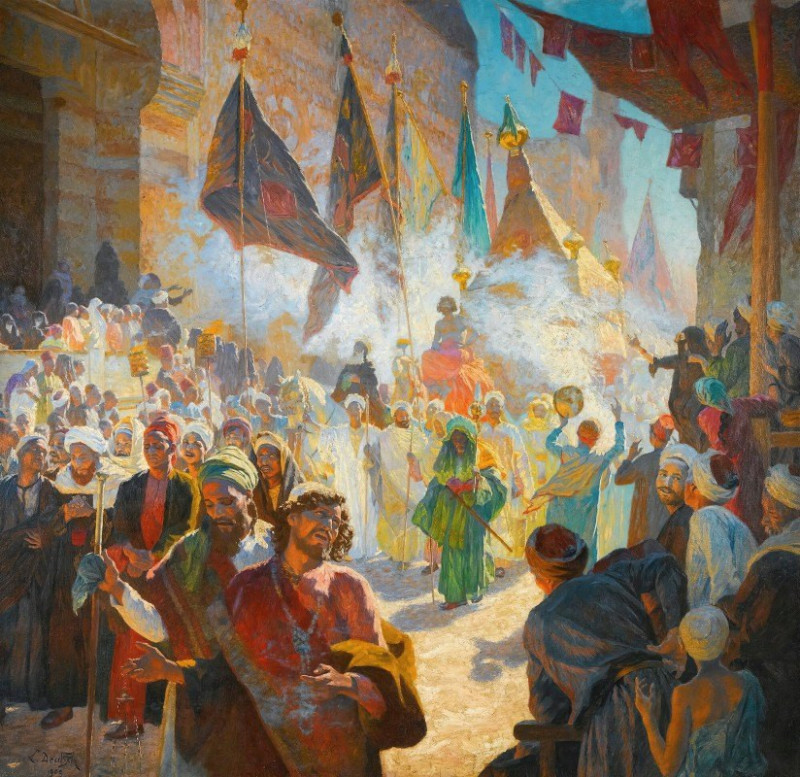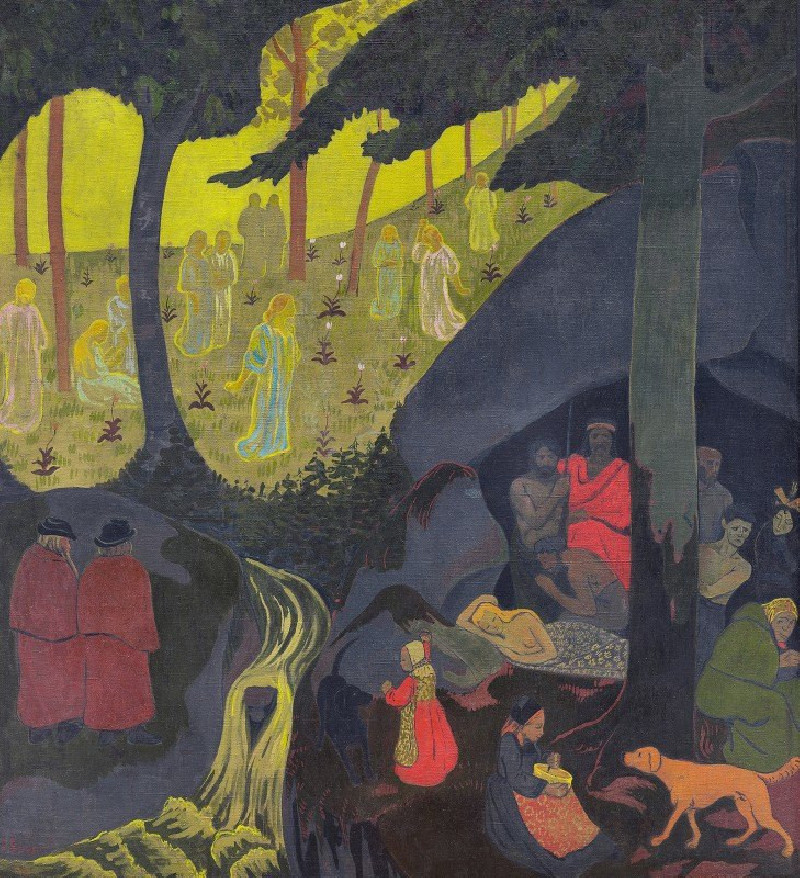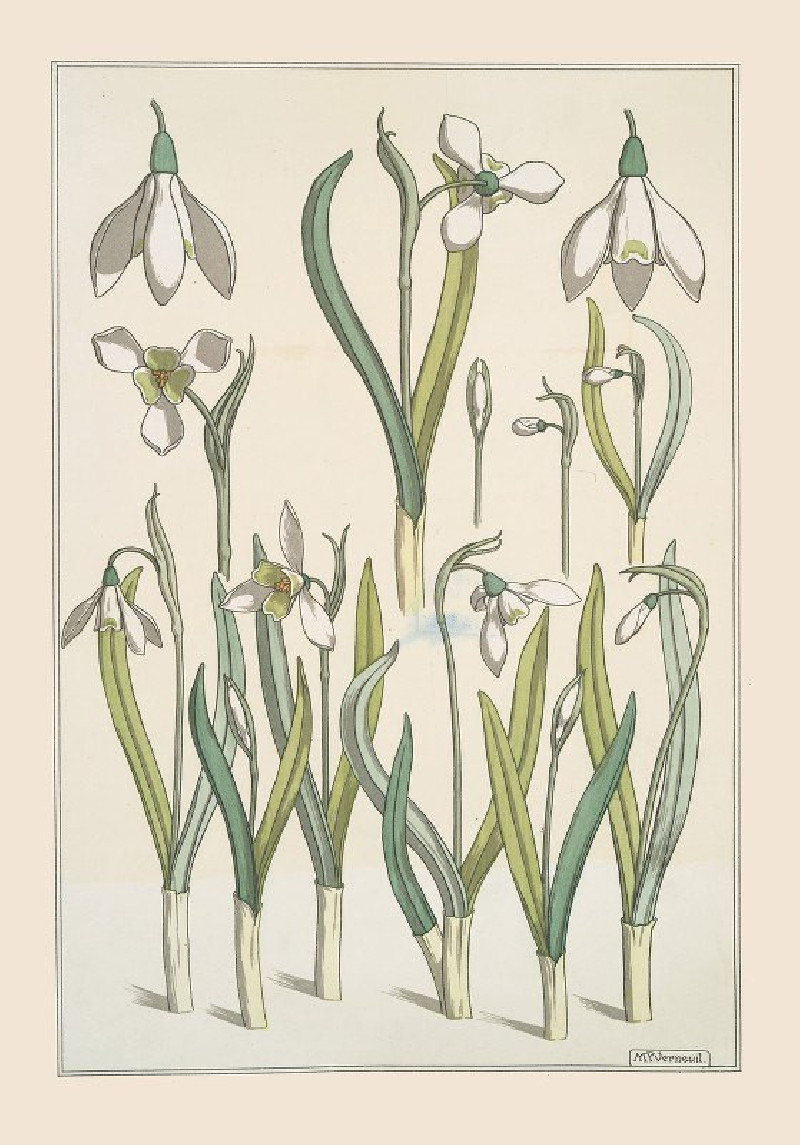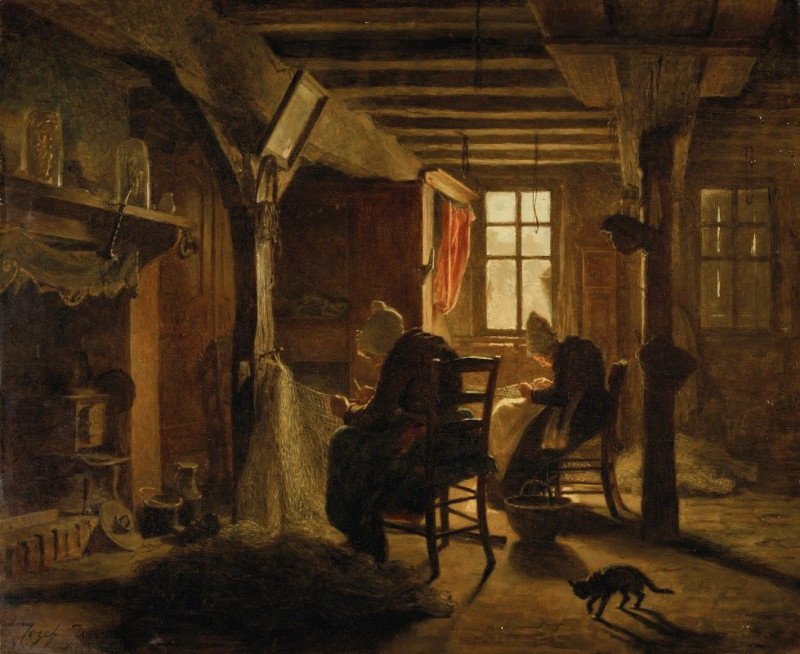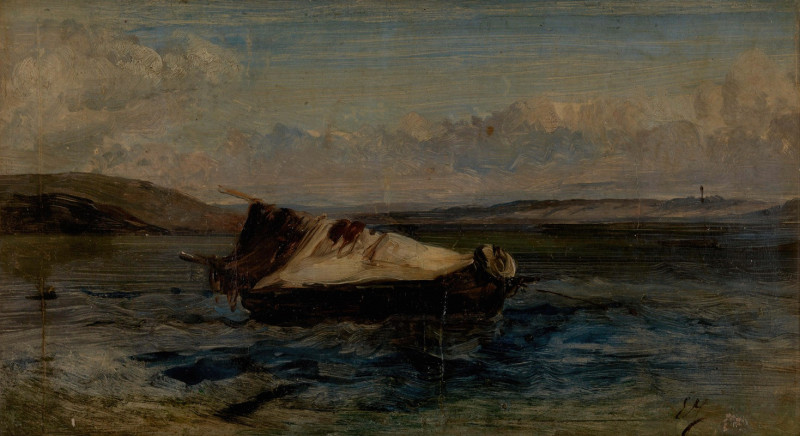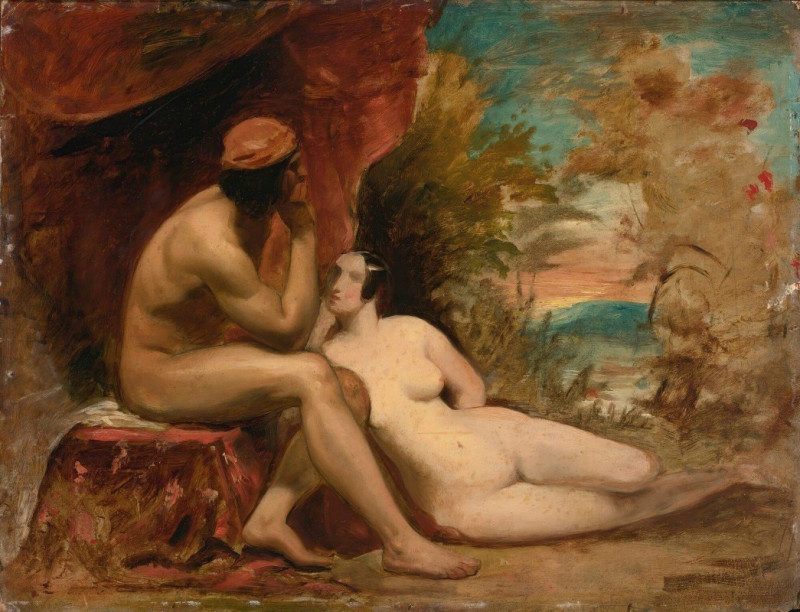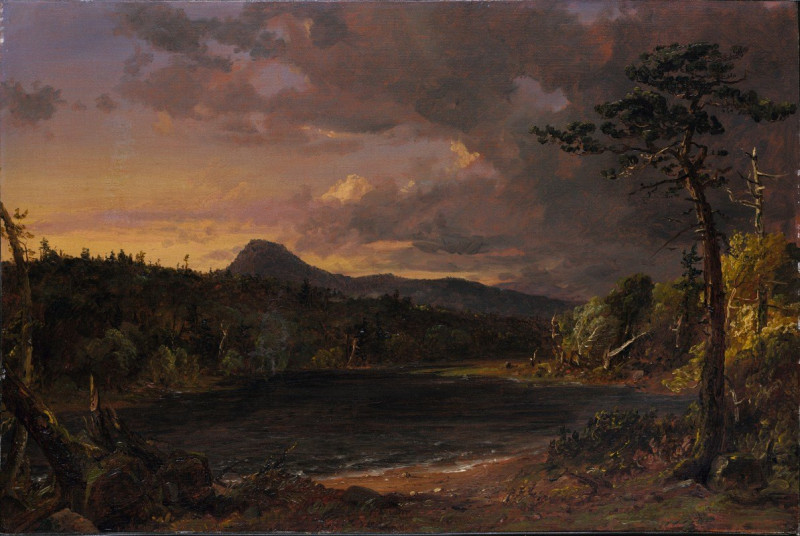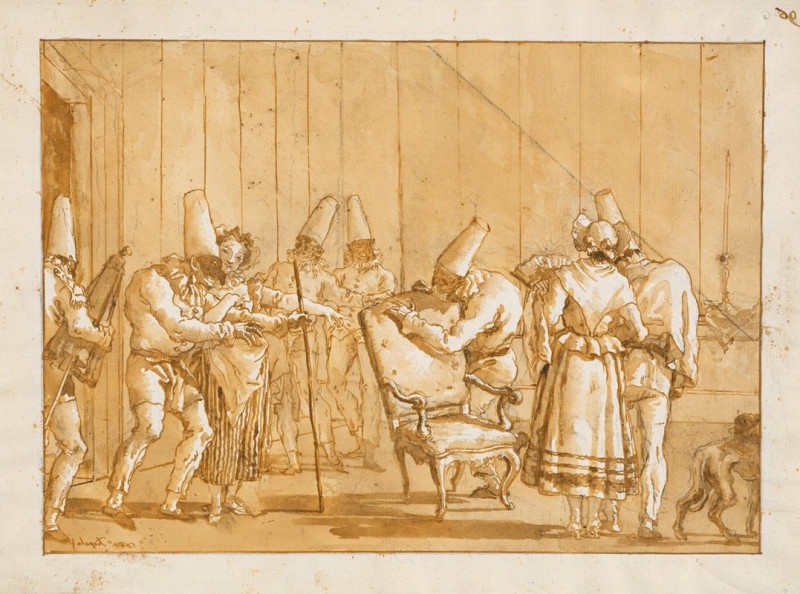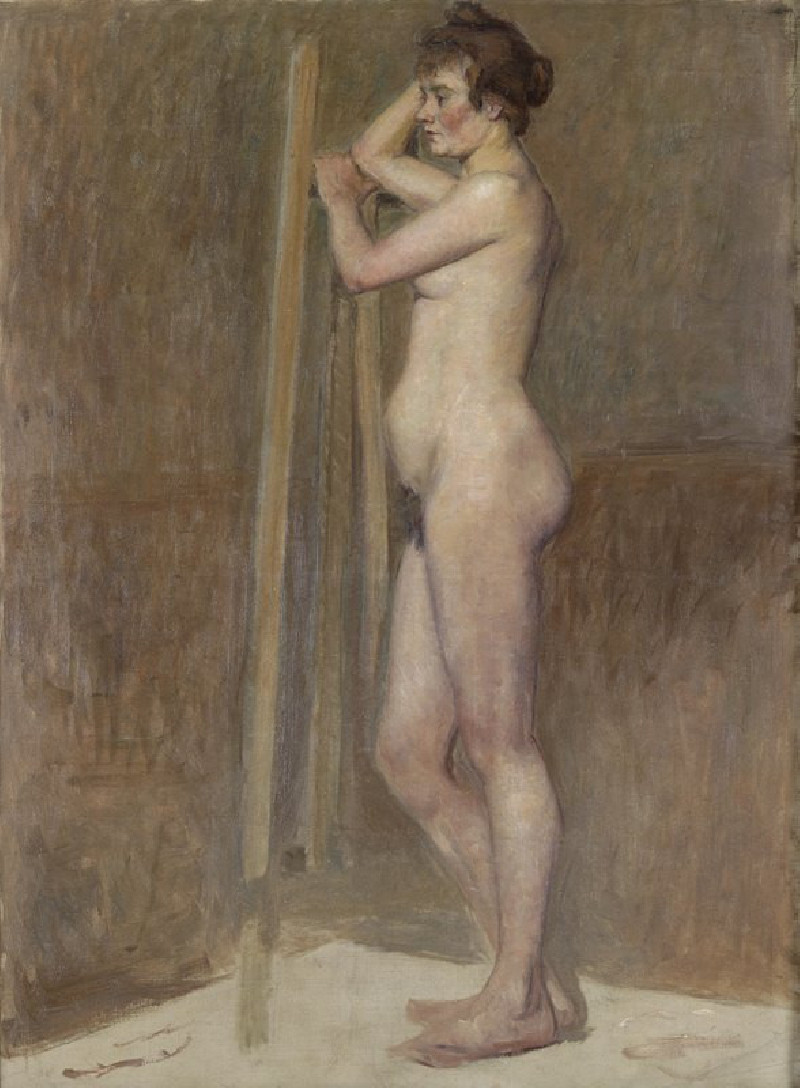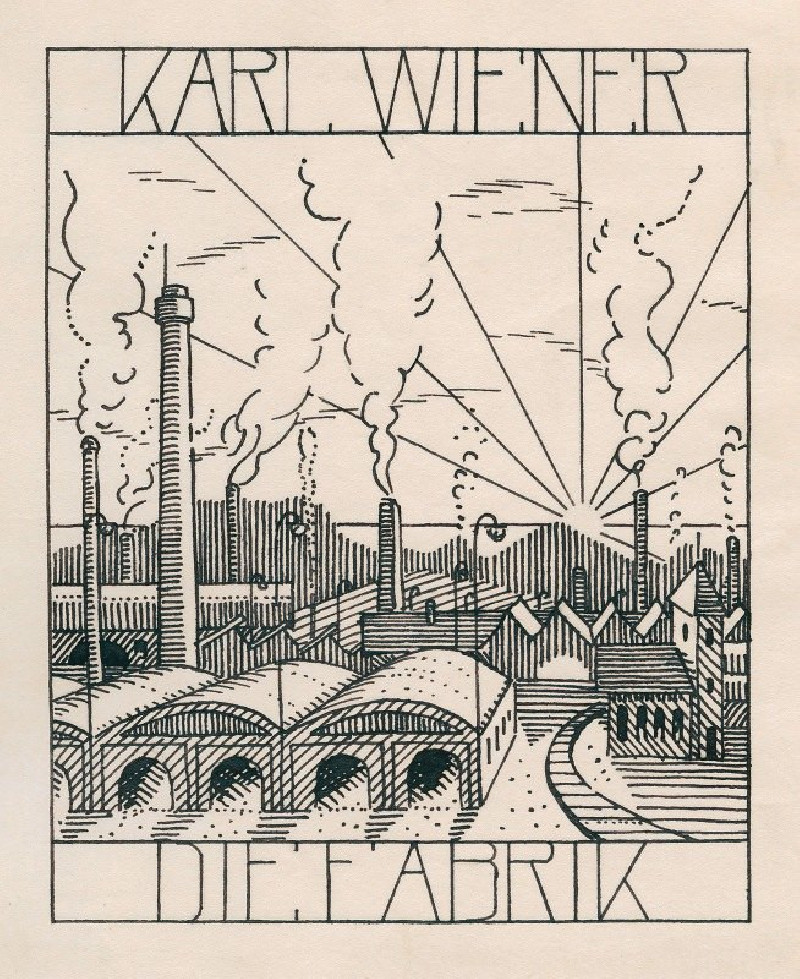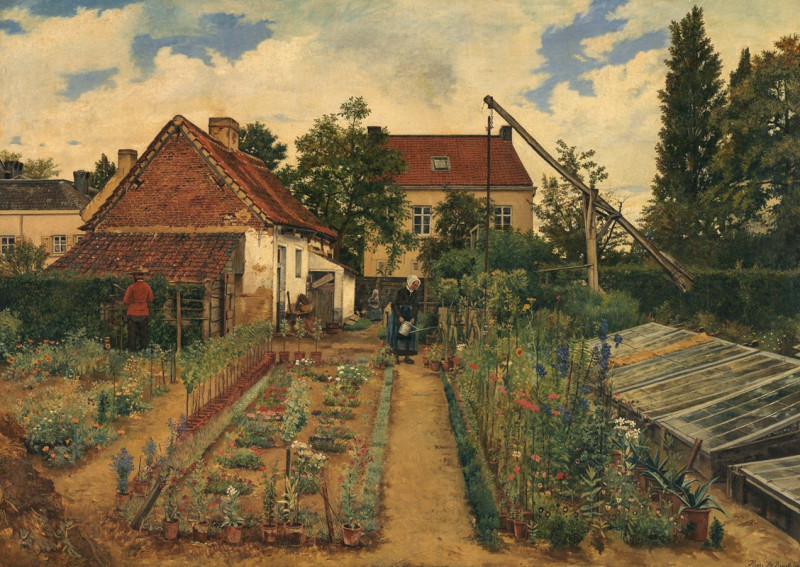The Temple of Vesta and the Falls at Tivoli (1859)
Technique: Giclée quality print
Recommended by our customers
More about this artwork
Explore the enchanting landscape captured in "The Temple of Vesta and the Falls at Tivoli" by William Callow. Painted in 1859, this artwork brings to life the tranquil beauty and grandeur of the ancient Roman world intertwined with the serene and powerful presence of nature.At the top of a boldly defined cliff, the Temple of Vesta stands majestically. It is an iconic cylindrical structure, characterized by its Corinthian columns and enduring marble stature, which historically served as a focal point in the worship of Vesta, the goddess of the hearth. The temple, bathed in sunlight, contrasts strikingly against the soft blues and delicate clouds of the sky, giving it a glowing, almost ethereal appearance.Below, the falls cascade powerfully, their mist cooling the rocky cliff sides, fostering lush greenery that clings to the waters' edges. The artist skillfully captures the dynamic movement of the waterfall, a natural element that enhances the scene's overall sense of peace and awe. The juxtaposition of the crafted human monument and the wild, untamed force of the waterfall evokes a deep sense of timelessness and the enduring connection between humanity and nature.The detail and color that Callow brings to this painting allow the viewer to almost hear the gentle rush of the falls and feel the cool mist on their skin, making this artwork a truly immersive experience.
Delivery
Returns
William Callow was an English landscape painter, engraver and watercolourist.
Callow was born in 1812. July 28 in Greenwich. He studied with the artist Copley Fielding, where he learned the technique of en plein air sketching. He studied under Theodore and Thales Fielding, where he learned to color prints and make aquatints, and from 1825 to 1827 was taught to paint in watercolor.



